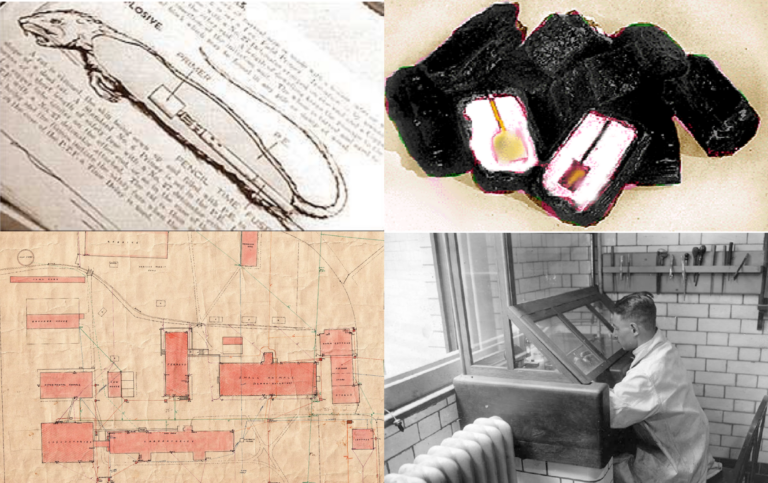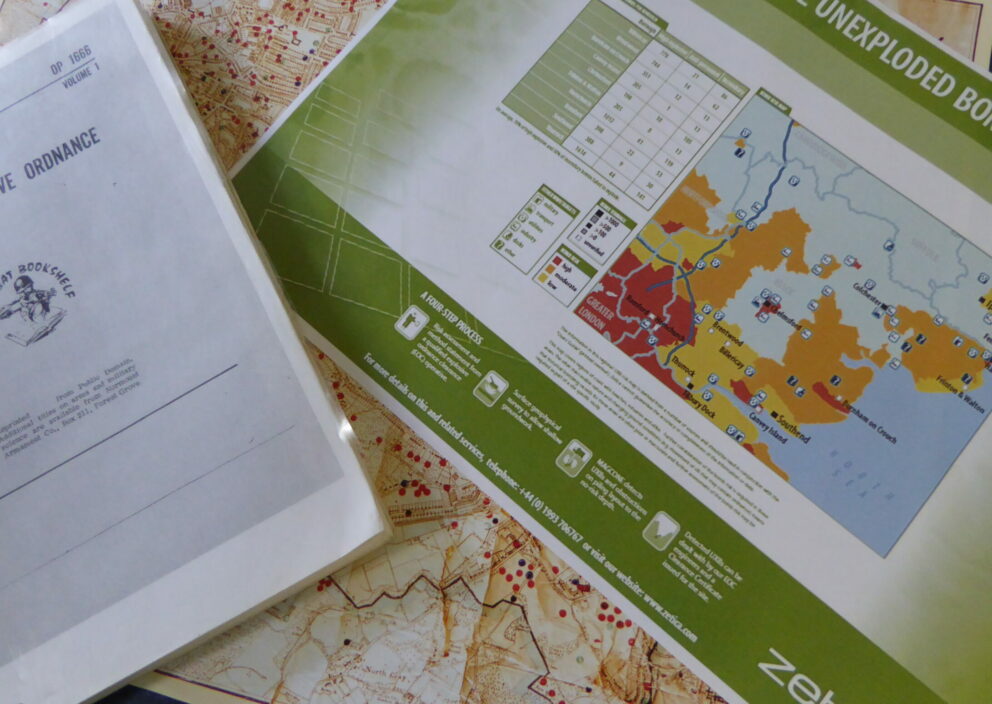We have been asked to undertake UXO risk assessments on many prestigious projects.
This includes the entirety of HS2, the UK’s first new town for more than 30 years, the Lower Thames Crossing Scheme, Heathrow’s third runway, the London Olympics, and the Southampton to London Pipeline (SLP) project. We have also been asked to undertake UXO risk assessments for some of the largest development areas in the UK, including for entire counties and vast offshore sites. Below is a small sample of the types of assessment we have undertaken.
HIGH SPEED RAIL TWO (HS2)
Zetica was commissioned to undertake a desk-based UXO risk assessment and mitigation plan for the HS2 rail route between London, Birmingham, Manchester and Leeds.
We presented HS2 with a detailed report that was easy to use and could be distributed to a wide audience, including procurement teams, construction managers, ground investigation contractors and other stakeholders.
Our detailed, corroborated research enabled the UXO hazard level to be zoned across the route. We obtained detailed historical aerial photography for the entire route, allowing areas of potential concern to be accurately defined.
A UXO hazard zone plan was provided in GIS format, with an accompanying semi-quantitative risk assessment that considered the proposed development works. This enabled the client to overlay their proposed work areas onto the various hazard zones, with detailed recommendations for how to mitigate any risks.
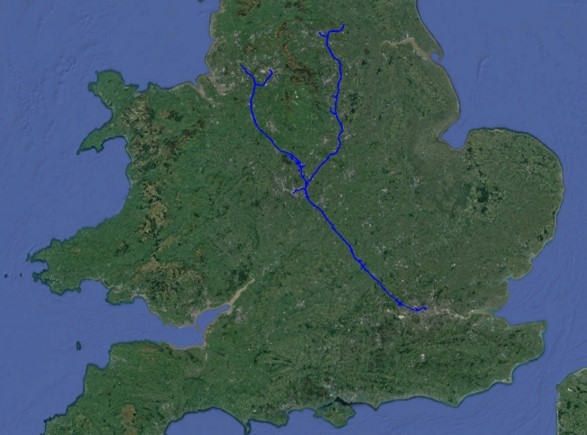
The depth of our research, and the pragmatism of the conclusions drawn, ensured that most of the route was assigned a low UXO hazard level, with only a few discrete areas assigned a moderate UXO hazard level.
Zetica continues to support HS2 with ground investigation and enabling works, providing UXO and utility clearance services which are informed by the original desk studies.
NEW TOWN DEVELOPMENT
Zetica undertook a detailed UXO desk study and risk assessment for the UK’s first ‘new town’ in decades.
The development of the 550ha site was complicated by the fact that most of the area was a former military airfield, subsequently used as an army training base.
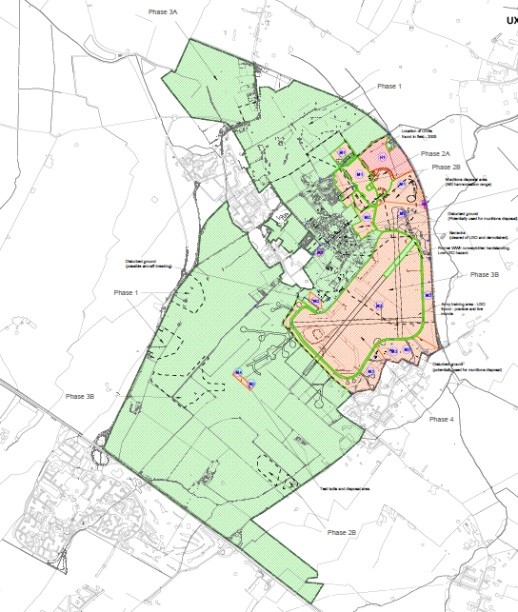
Whilst numerous surveys had been conducted by UXO specialists, Zetica were the first to fully assess the UXO hazard in detail.
The level of desk-based research enabled us to zone the UXO hazard level across the development, with a detailed risk mitigation strategy devised for each phase of construction.
The end result was a significant reduction of the areas requiring any significant UXO risk mitigation, with the vast majority of the development being assigned a low UXO hazard level.
To mitigate the risk in the moderate and high UXO hazard zones, a non-intrusive UXO detection survey was first undertaken. Using a combination of techniques towed on a single geophysical platform, this allowed us to map both ferrous and non-ferrous ordnance across the site. The surveys also detected potential archaeology, utilities, buried obstructions, changes in ground conditions and much more.
Directed by the findings of the UXO risk assessment and the results of the survey, a target list of potential UXO items was compiled for further investigation. 3No. of these targets were (as anticipated) shallow-buried British UXB.
Numerous other items of ordnance were found, all of which were made safe in a dedicated Explosive Ordnance Disposal (EOD) facility that Zetica had established on site.
Zetica has continued to offer support throughout the duration of the development, providing UXO awareness briefings to new contractors working at the site.
Offshore Risk Assessment
Zetica undertook a detailed UXO desk study and risk assessment for a planned dredging operation off the East Coast.
We were able to apply our usual high standard of in-depth research to the UXO hazard in the marine environment, consulting a wide range of records.
This helped identify a range of possible sources of UXO hazard, including WWII bombing, offshore military ranges and wrecks potentially containing ordnance. The study also took into consideration the migration of UXO as a result of offshore tidal currents and sediment pathways.
Historical dredging records were also acquired. These revealed that significant and regular dredging had been undertaken on the site up until the 2010s. Zetica held meetings with the client to discuss the potential UXO hazard in the context of these records. It was concluded that any UXO on the site would likely have already been removed.
Through detailed research and an evaluation of site conditions, Zetica was able to provide the client with the confidence that the dredging operation could proceed safely.
To ensure the residual risk was managed, UXO awareness briefings were provided to the dredging teams, with emergency contacts provided so that instant advice could be received in the unlikely event of a suspect find.

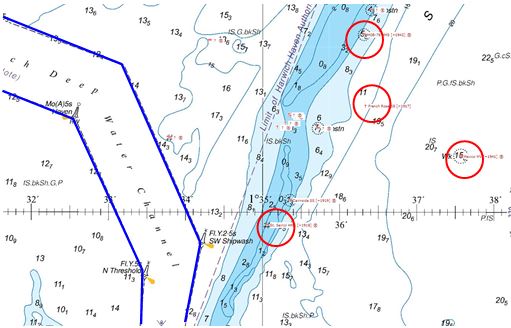
Large Area Risk Assessment
Zetica was commissioned to undertake a UXO desk study for proposed cable routing options across an approximately 5,000km2 area.
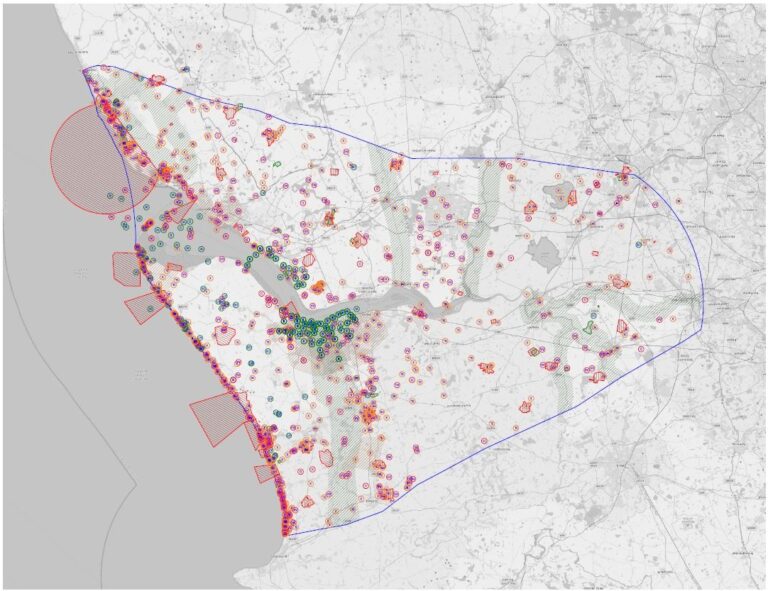
An initial UXO constraints assessment was undertaken. This involved mapping potential UXO hazard constraints across the area of search, allowing cable routing options to avoid obvious sources of hazard.
A wide range of information was consulted to populate our constraints map, including national and regional archival records, historic environment records, and our own in-house databases.
Once a final route had been selected, Zetica undertook a detailed UXO risk assessment. This enabled the UXO hazard level to be zoned along the length of the route.
Due to this multi-stage UXO risk assessment approach, most of the proposed cable routes were realigned to avoid identified UXO hazards.
Where this was not possible, we designed suitable surveys that could identify and remove the risk of UXO prior to construction. Such surveys were also able to detect a range of other potential constraints, such as archaeology and buried obstructions.
International Risk Assessment
Zetica was commissioned to undertake a UXO risk assessment for a 1,518km electricity interconnector scheme between Israel and Greece in the Eastern Mediterranean Sea.
Our research identified several different sources of potential UXO hazard from over a century of military activity. This included aerial bombardment, naval and submarine attacks, minefields and ordnance-carrying shipwrecks.
Research was undertaken into the extent of historic and modern-day training areas, accounting for different types of ordnance and operational histories. Efforts were also made to find UXO clearance records for areas of training and historical minefields that might mitigate the potential UXO hazard.
Using archival documents and historical hydrographic charts to inform the assessment, Zetica’s thorough and in-depth research was able to zone the UXO hazard level on the Site, confidently identifying areas of more and less significant hazard.
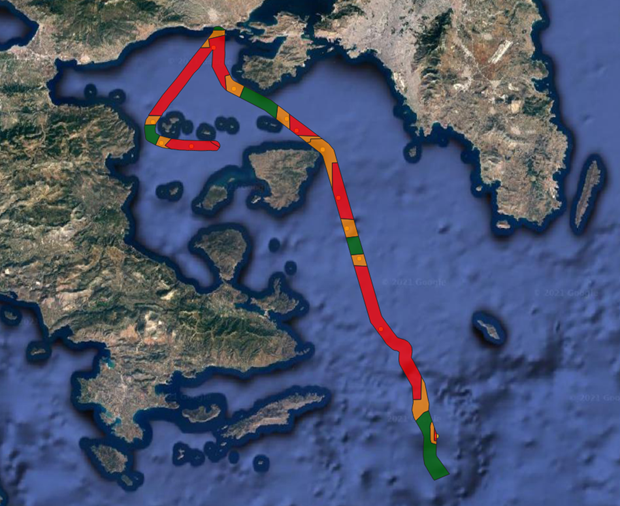
A UXO risk register was compiled, concisely identifying different UXO hazard zones and outlining the risk mitigation requirements for each aspect of construction.
Other Specialist Risk Assessments
Using the research experience of our risk assessment team, Zetica offer clients desk studies for more unique sites. Whilst they may not have a potential UXO hazard, sites with an unusual or complex history require specialist in-depth research to establish their past operations. This can help identify unconventional hazards that may not be readily identified by a standard Phase I desk study.
Examples include former medical research facilities and secret government installations. We are often asked to confirm the exact use of a site, including the potential presence of radioactive, biological and other unconventional chemical contamination sources. Sometimes it is simply a case of identifying where something was buried.
By compiling a detailed history of a site and thoroughly understanding its former operations, our studies are often able to accurately record the historic use of each former and existing building. This allows us to identify potential sources of contamination and input into appropriate remediation strategies, along with other area specialists.
There are all sorts of weird and wonderful sites out there.
